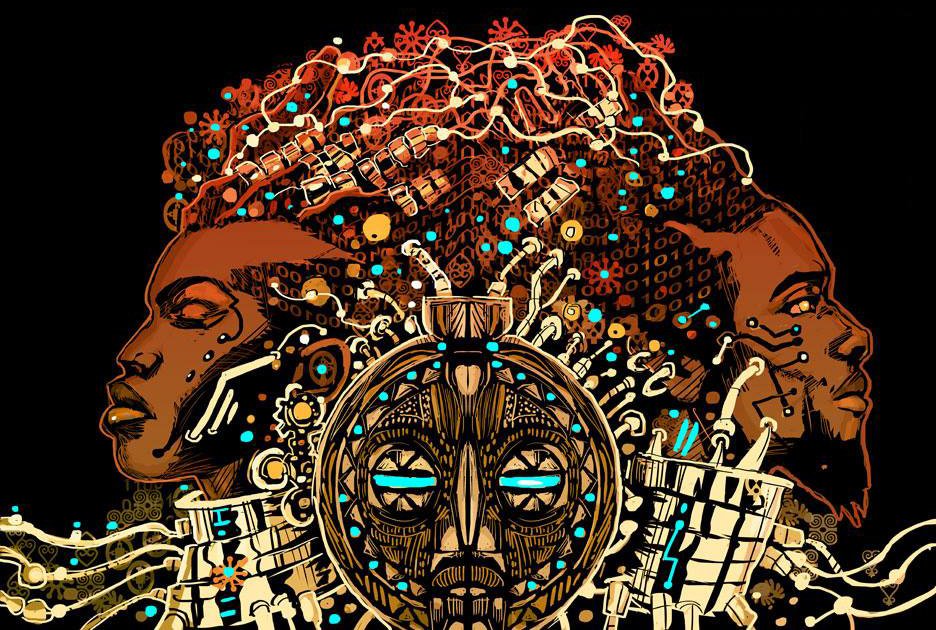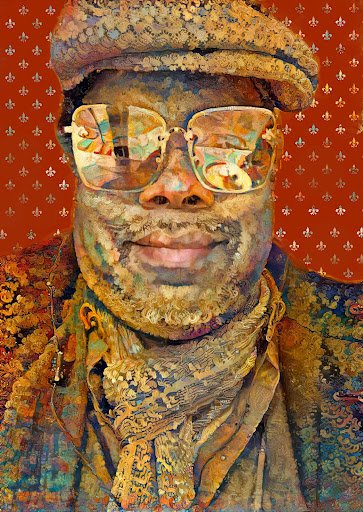Blog
Recent News:
Black Speculative Arts (January 3, 2022)

Earthseed Remembers: Greg Tate (1957 – 2021)

The Earthseed Lab acknowledges the life and passing of Greg Tate. Professionally, Tate was best known as a cultural critic and writer for publications such as the Village Voice and Rolling Stone where he wrote about culture, music, and Black people. His love of music led to his involvement with the Burnt Sugar Arkestra as a guitarist and conductor. Personally, I found him generous with his time and expertise for younger scholars who sought his approval and generally felt more fly by being in his presence. He was one of the people in conversation with Mark Dery as a founding definer of Afrofuturism. In Flame Wars (originally published in Black to the Future) Tate bristles back against the notion that Black people did not connect to science fiction and noted thematic threads that could be found in spirituality, play, music, and visual art practice. Below is an excerpt from the conversation between Mark Dery and Greg Tate that illuminates this point:MARK DERY: Delany suggested to me that blacks are fenced out of science fiction by semiotic concertina wire, that the blinking instrument panels and other technological paraphernalia that typify the genre function as “No Trespassing” signs for writers of color. -Brandy Pettijohn
GREG TATE: I can’t accept that, because you have such a whole-hearted embrace of that hardware by black and Latino youth when it appears in films, TV shows, video games. I mean, who would have predicted that young black and Latino males would spend enough time in Times Square video arcades during the late seventies to make those games the million-dollar industry that they are? There’s defi- nitely a fascination with sci-fi imagery in video games, and if you look at the graffiti art done in the New York subways throughout that same era by artists like Rammellzee, Phase 2, Kase, and Blade, there’s an incredible interest in fantasy in the SF vein, especially in the apocalyptic sense, involving the insertion of black figures into post-atomic holocaust landscapes. A lot of Blade’s work, for example, is set in a cyberspace-style environment; his imagery looks like computer graphics, with his name running through the landscape. Futura 2 0 0 0 ‘S painting The Good, the Bad, and the Ua1y, which pays homage to the hip-hop group Cypress Hill, has three ghostly figures floating on what appears to be a TV screen hovering over a dark, ominous cityscape.
Black Women and Theories of the Future (February 19, 2022)
Check out the panel “Black Women and Theories of the Future,” hosted by the Schomburg Center for Research in Black Culture. The conversation details and discusses Black women’s cultural and academic contributions to Afrofuturism past, present, and future and features Dr. Susana Morris (Georgia Institute of Technology), Dr. Kinitra Brooks (Michigan State University), and Dr. Esther Jones (Clark University), Dr. Tiffany Barber (University of Delaware), and Dr. Grace Gipson(Virginia Commonwealth University).
